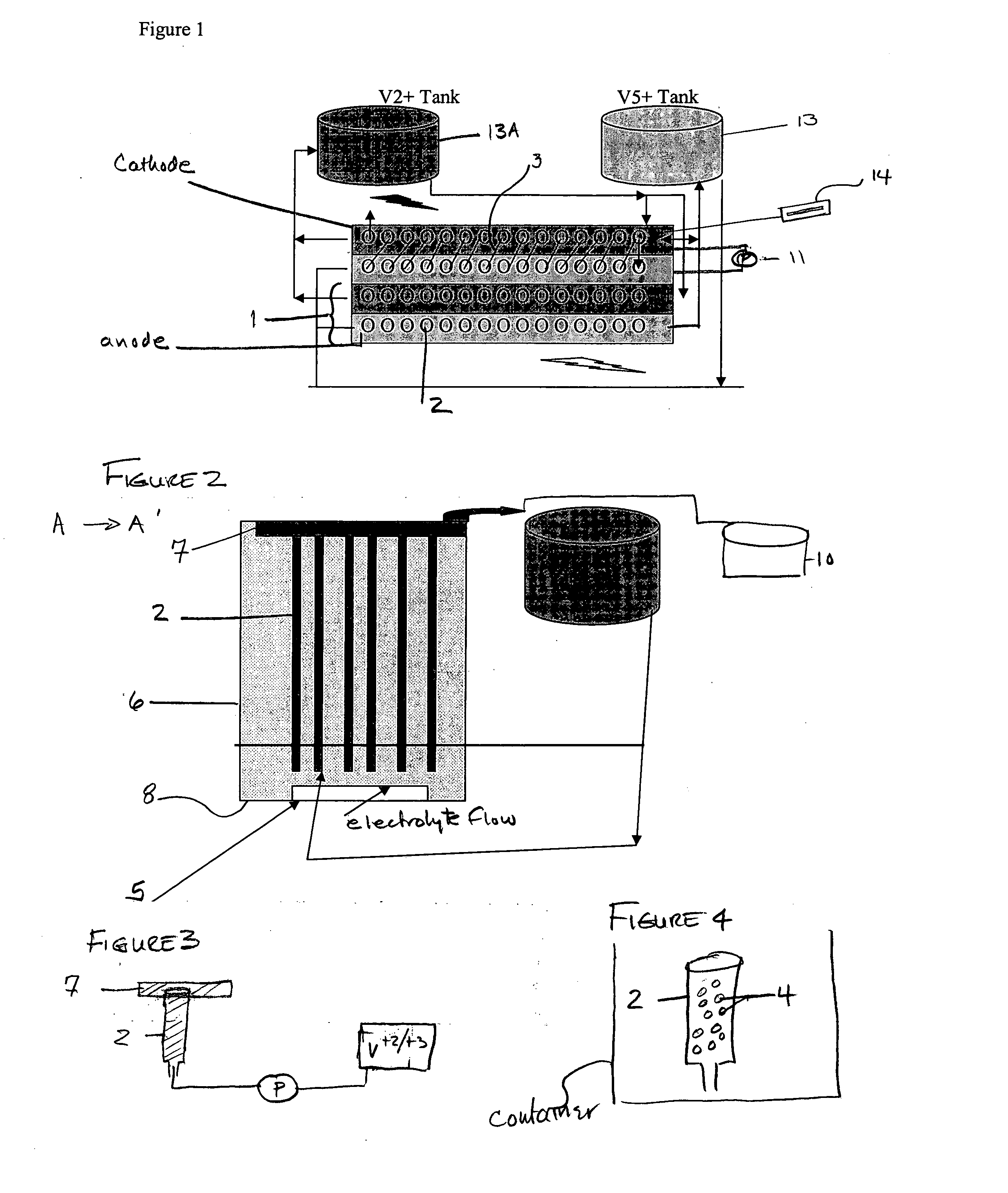Load leveling and electrolysis system
a load leveling and electrolysis technology, applied in the field of load leveling and electrolysis systems, can solve the problems of not taking into account the cost benefits of generated oxygen, and achieve the effects of minimizing all causes of resistive (1r) loss, effective and cost-efficient load leveling, and keeping resistance very low
- Summary
- Abstract
- Description
- Claims
- Application Information
AI Technical Summary
Benefits of technology
Problems solved by technology
Method used
Image
Examples
Embodiment Construction
[0039] The present invention provides a truly scalable load leveler and electrolyzer at less than $500,000 / megawatt. Each chamber of the L-Cell is preferrably designed as a large structure in order to allow for large current loads, as well as accompanying required high water and gas flows to match the high power inputs.
[0040] The materials used in the construction of the L-Cell containers, tanks are relatively inexpensive, such as PVC or PE or PP or many other plastics suitable for use with the chosen electrolyte, e.g., H2SO4. The electrodes can be made of many suitable porous materials having a conductive material either inside of an electrode or formed as at least a part of the electrode. Said material must not deteriorate in the electrolyte, yet it must efficiently conduct electricity. Carbon and metal materials are generally preferred. Each L-Cell uses about 1.5 volts per cell (depending on the chosen ion couples) to charge; and each group of cells may contain as many cells as ...
PUM
| Property | Measurement | Unit |
|---|---|---|
| net voltage | aaaaa | aaaaa |
| electric energy | aaaaa | aaaaa |
| electric energy | aaaaa | aaaaa |
Abstract
Description
Claims
Application Information
 Login to View More
Login to View More - R&D
- Intellectual Property
- Life Sciences
- Materials
- Tech Scout
- Unparalleled Data Quality
- Higher Quality Content
- 60% Fewer Hallucinations
Browse by: Latest US Patents, China's latest patents, Technical Efficacy Thesaurus, Application Domain, Technology Topic, Popular Technical Reports.
© 2025 PatSnap. All rights reserved.Legal|Privacy policy|Modern Slavery Act Transparency Statement|Sitemap|About US| Contact US: help@patsnap.com


